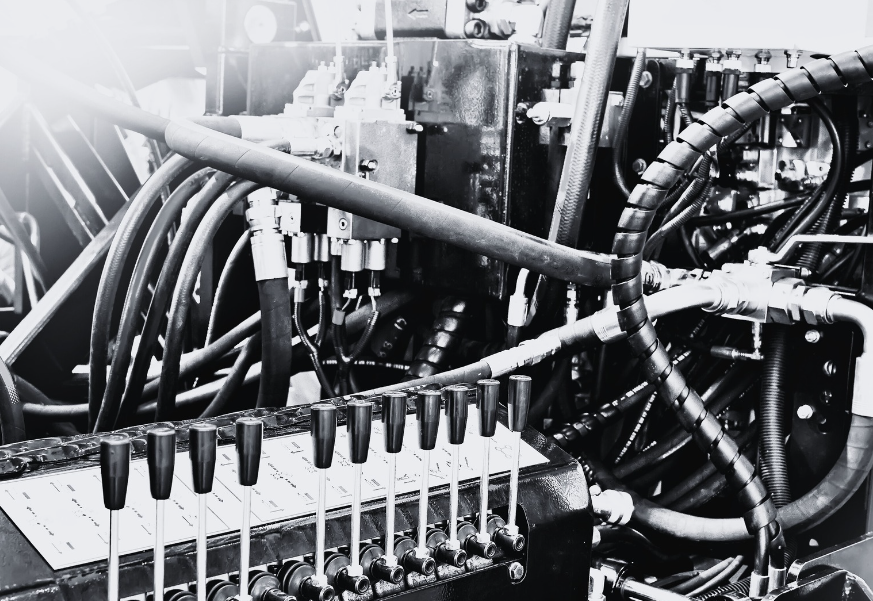The Function of Directional Control Valves in the Hydraulics Industry
What are directional control valves?
At their core, directional control valves are devices that manage the flow of pressurized hydraulic fluid by opening, closing, or altering passageways within a system. These valves are designed to control where fluid goes within a circuit, allowing for precise manipulation of hydraulic actuators such as cylinders and motors. The fluid's movement through these actuators is what allows machines to lift, push, pull, or rotate loads in hydraulic-powered systems.

What is the function of a direction control valve?
- Flow Control: The main function of a DCV is to control the flow of hydraulic fluid. By either allowing or restricting flow to different areas of a system, it enables the movement of mechanical components such as pistons, cylinders, and hydraulic motors. This control can be partial (adjusting the rate of flow) or complete (fully open or closed positions).
- Direction Control: DCVs determine the direction in which the hydraulic fluid flows. By switching between different flow paths, they can control the direction of movement in actuators. For example, in a hydraulic cylinder, this would dictate whether the piston extends or retracts.
- Start, Stop, and Pause Operations: A DCV can act as a switch to start or stop the flow of fluid in a system. In more advanced configurations, DCVs can also pause operations by isolating fluid in a certain part of the system, holding actuators in place when needed. This level of control is critical in applications requiring precision, such as in robotics or assembly line machinery.
- Pressure Control: By managing the fluid's flow path, DCVs can also indirectly influence system pressure. While dedicated pressure control valves are responsible for fine-tuning, directional control valves can still have an effect by changing the conditions under which the fluid moves.
What are the types of directional control valves?
There are various types of DCVs, each designed to serve a specific purpose depending on the complexity of the hydraulic system. Some common types include:
- Spool Valves: These valves use a spool to regulate flow by shifting inside the valve body. The spool moves horizontally or rotationally, opening and closing flow paths.
- Poppet Valves: Unlike spool valves, poppet valves use a poppet mechanism to open or close the flow. They are often used in systems requiring quick, on-off switching and minimal leakage.
- Sliding Plate Valves: These valves have sliding plates that shift to open or close flow paths. They are simpler than spool valves and are used in applications requiring moderate control without high precision.
- Rotary Valves: In rotary valves, the mechanism involves a rotating part that aligns or misaligns flow paths to control fluid direction. These are often used in compact systems or applications where rotary motion is part of the process.
Why are actuators used in directional control valves?
Actuators are used in directional control valves to operate the valve and control the flow of hydraulic fluid. They enable the valve to switch between different positions, directing fluid to various parts of a hydraulic system.
Actuation methods
DCVs can be actuated in several ways, depending on the system’s needs:
- Manual Actuation: Lever or handle-operated, used in systems where simple and direct control is needed.
- Mechanical Actuation: Operated by cams, springs, or rollers, commonly used in automated systems.
- Hydraulic or Pneumatic Actuation: Uses fluid pressure or air pressure to operate the valve.
- Electrical Actuation: Solenoids are used to electrically control the valve, often found in modern automated hydraulic systems.
What is the use of a direction control valve?
- Mobile Machinery: DCVs are essential in construction and agricultural machinery such as excavators, bulldozers, and tractors. These machines rely on precise control of hydraulic cylinders and motors for their various movements.
- Manufacturing and Industrial Automation: In factories, DCVs control the movement of robotic arms, conveyor belts, and pressing machines, ensuring smooth and efficient operations.
- Aerospace: In aircraft, directional control valves are vital for operating landing gear, flight control surfaces, and braking systems, ensuring safety and reliability.
- Automotive Systems: In vehicles, especially those with hydraulic systems like braking or suspension, DCVs ensure precise operation and responsiveness to driver inputs.
The importance of a direction control valves in hydraulic systems
Without directional control valves, hydraulic systems would lack the ability to direct energy in a purposeful way. Machines would be incapable of moving fluid in the desired direction, leading to inefficiency or, worse, system failure. Properly designed and maintained DCVs ensure smooth operations, system longevity, and safety for operators.
Conclusion
Directional control valves are essential components in hydraulic systems, enabling precise control of fluid flow, direction, and pressure. They ensure that hydraulic energy is efficiently directed where it's needed, allowing machines to perform complex tasks with accuracy and power. Whether in heavy machinery, industrial automation, or aerospace, the reliability and functionality of DCVs are vital for smooth operations and system safety. Their role in optimizing performance and extending the life of hydraulic systems makes them indispensable in the hydraulics industry.
The total one-stop supplier for hydraulic components & systems
Get in touch
Parys Road
Ludlow
Shropshire
SY8 1XY








